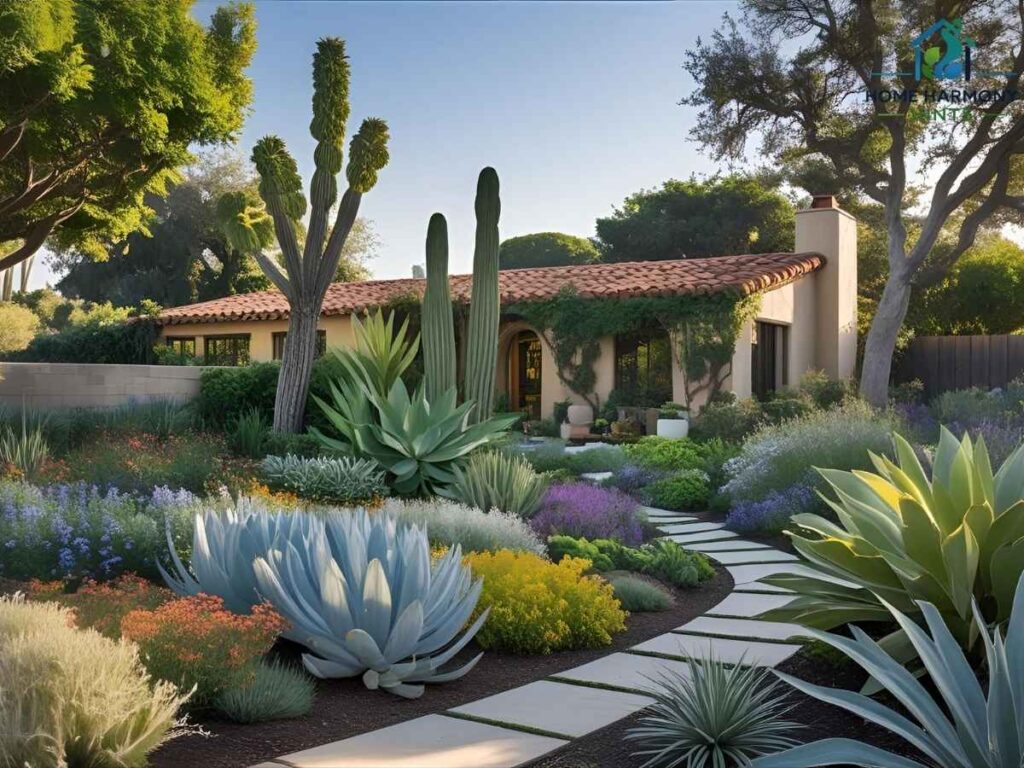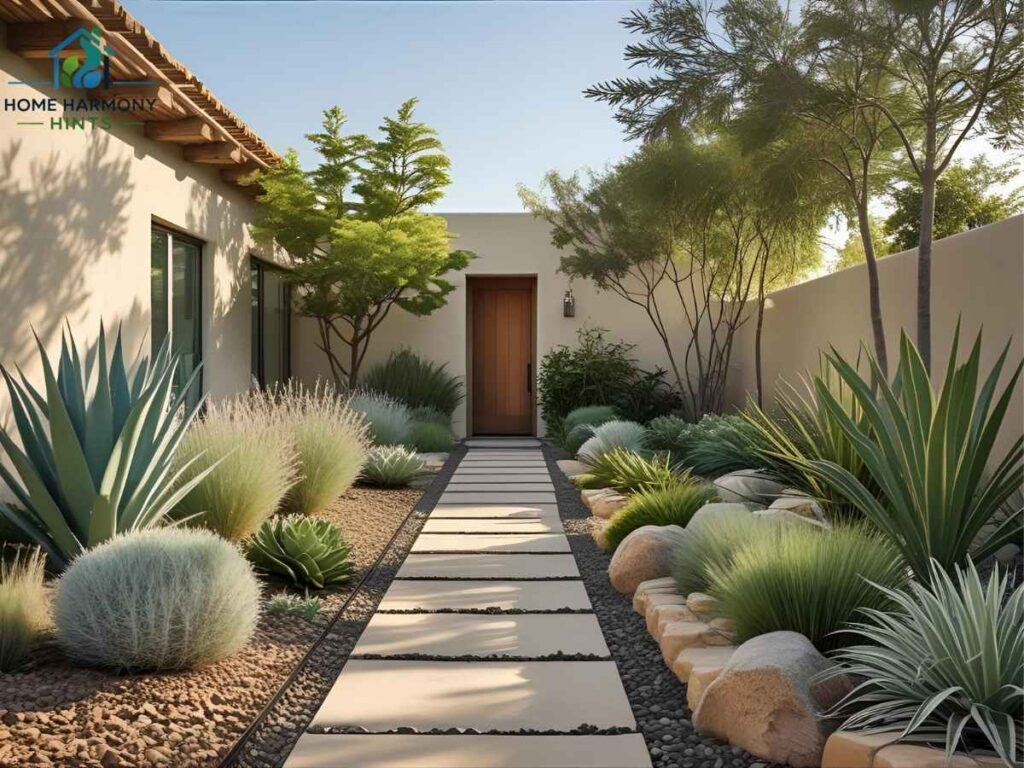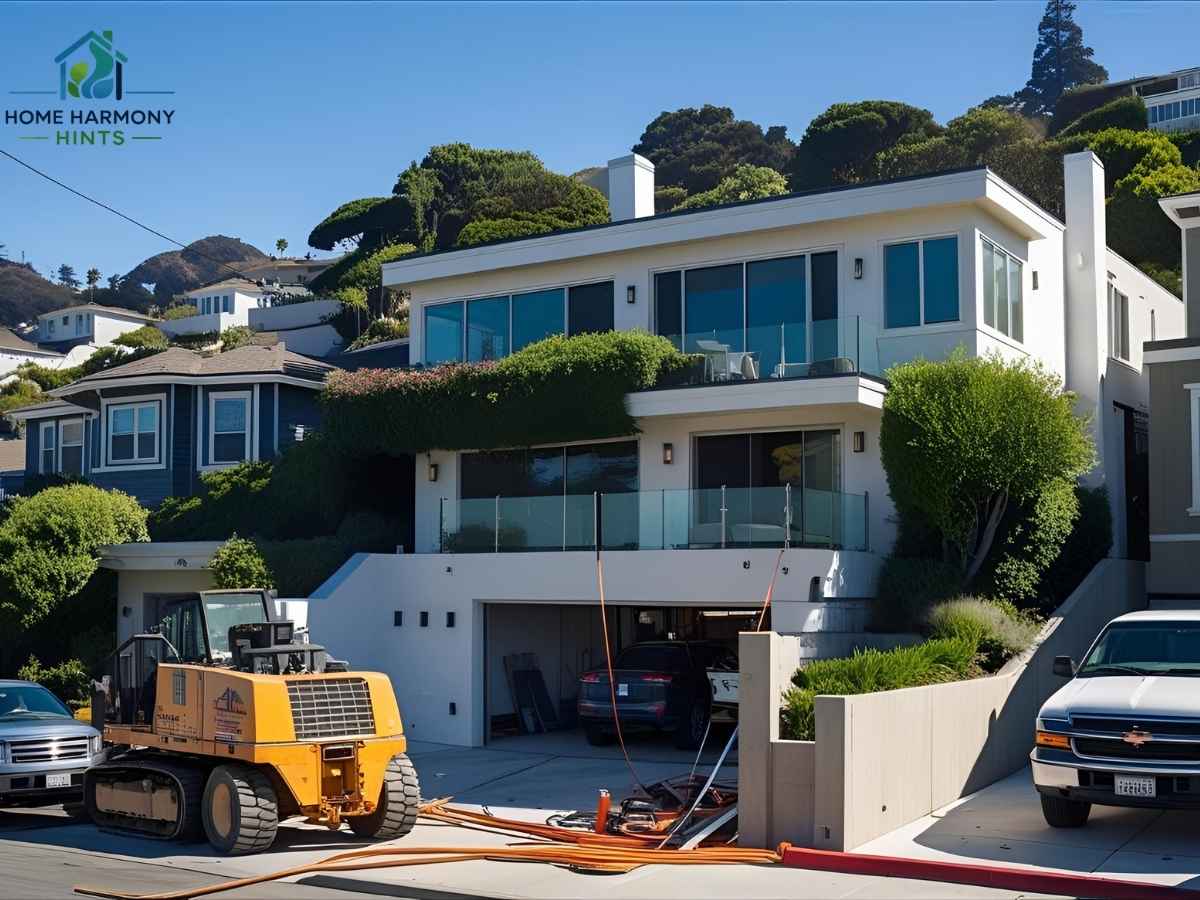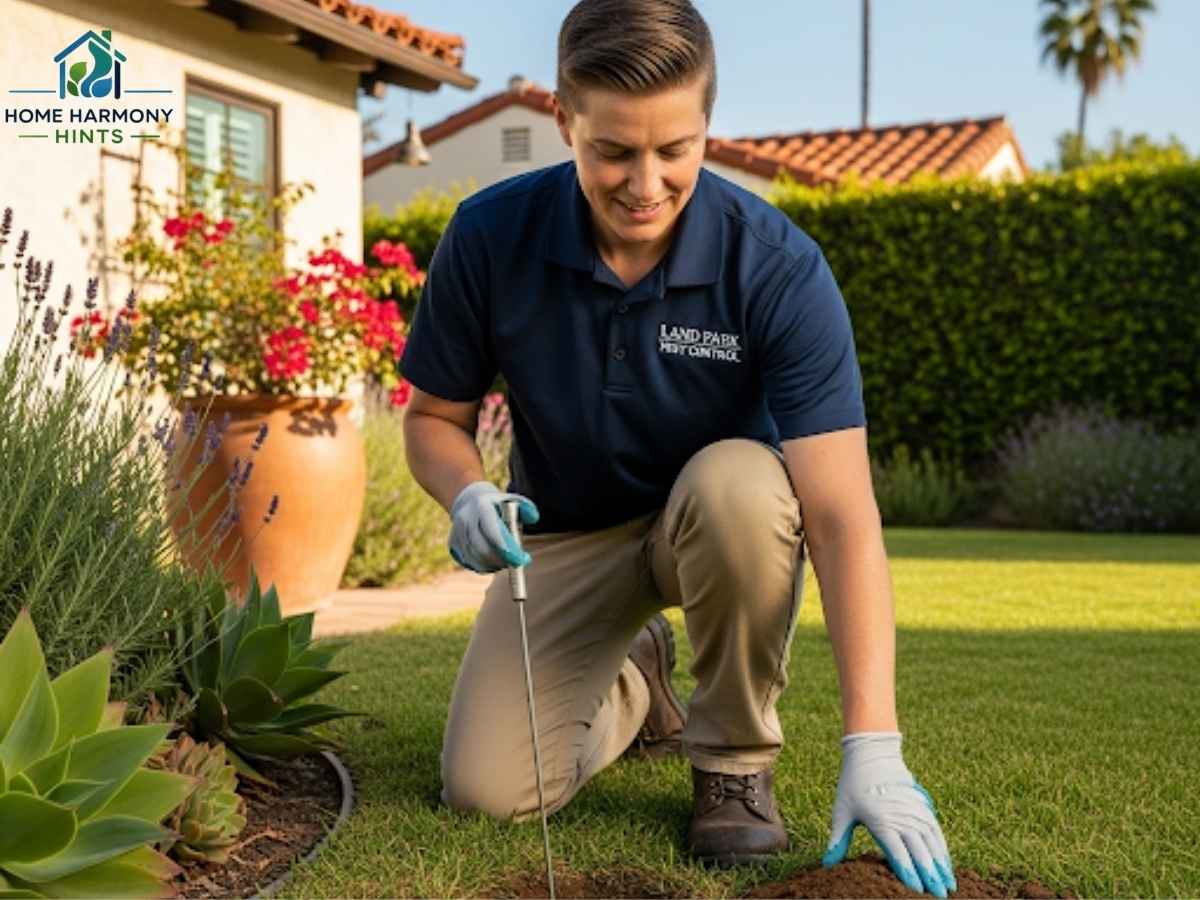Imagine stepping out into your Los Angeles backyard on a warm, sunny morning and being greeted by the soft rustle of native shrubs, the cheerful hum of buzzing pollinators, and a landscape that celebrates Southern California’s unique environment. If you’re dreaming of a garden that won’t just survive but thrive in our semi-arid Mediterranean climate while honoring the natural heritage of the region, then native plant landscaping inspired by Presidio’s conservation model is right for you.
Table of Contents
Understanding Los Angeles’ Climate and Landscaping Challenges
Los Angeles is blessed with a Mediterranean climate characterized by hot, dry summers and mild, wet winters. Average annual rainfall ranges around 15 inches — most of it falling between November and March. That means homeowners face extended dry periods from spring through fall, matched with frequent heat waves and occasional Santa Ana winds which dry out plants rapidly.

Water scarcity is more than a seasonal annoyance here; it’s a persistent challenge. LADWP reports Los Angeles faces chronic water supply constraints, pushing the city to enforce watering restrictions and promote conservation. For example, the 90026 zip code (Echo Park) averages roughly 60°F to 85°F for much of the year, with prolonged dry spells that strain traditional lawns and exotic plants that demand much high irrigation.
Moreover, Los Angeles is exceptionally geographically diverse. Coastal neighborhoods like Venice and Santa Monica benefit from cooler marine air and fog influence, while inland areas including the San Fernando Valley and the eastern San Gabriel foothills endure hotter temperatures — at times climbing above 100°F during summer. This microclimatic variation means a one-size-fits-all approach to landscaping doesn’t work. Homeowners must select plant species and designs tailored to their neighborhood’s specifics.
Beyond climate, urban development has fragmented native habitats, causing native pollinators and bird populations to decline. Incorporating plants such as Eriogonum (buckwheat), manzanita, and Ceanothus species nurtures these vital creatures from bees to hummingbirds, which in turn support the local ecosystem.
What Makes Presidio Native Plant Landscaping Ideal for Los Angeles
The Presidio principle centers on choosing plants naturally adapted to local conditions—fostering low water use, soil health, and biodiversity. Native plants have evolved over millennia to thrive on the limited rainfall and poor soils characteristic of Southern California’s terrain.
By mimicking natural chaparral or coastal sage scrub communities in your landscape, you enjoy benefits including:
- Reduced water consumption by up to 85%, supporting LA’s drought efforts.
- No need for chemical fertilizers or pesticides thanks to natural disease resilience.
- Rich habitat for pollinators, birds, and beneficial insects thriving in native plants.
- Lower maintenance, as these plants are adapted to seasonal cycles and require fewer trims or irrigation adjustments.
In Los Angeles neighborhoods such as Echo Park, Highland Park, and Silver Lake, we’re seeing a grassroots movement of residents turning traditional turf lawns into vibrant native gardens — an inspiring shift from water-hungry landscaping to sustainable beauty.
Tailored Landscaping Solutions for Different LA Neighborhoods
Echo Park (90026 ZIP Code)
The Ramirez family in Echo Park faced soaring water bills and a yard that lacked character or wildlife. After consulting local native plant designers, they removed a thirsty Bermuda grass lawn and replanted with a diverse palette of drought-tolerant sages (Salvia species), Eriogonum fasciculatum (California buckwheat), and Cleveland sage, native to the area.
Thanks to drip irrigation and mulch layering, the Ramirez garden now requires far less water, saving them over 7,000 gallons annually. The garden’s mix of seasonal blooms invites native bees and even residents have spotted California towhees and hummingbirds. This garden serves as a model in Echo Park, where similar drought conditions and urban proximity apply.
Highland Park (90042 ZIP Code)
In Highland Park, the Chen family wanted a garden that honors its location near the Arroyo Seco Parkway, an important wildlife corridor. Partnering with Garden Natives, they developed a layered landscape featuring dense shrubs like manzanita (Arctostaphylos spp.) and toyon (Heteromeles arbutifolia), which offer not just flowers but winter berries that sustain bird populations. Their design also included a rain garden to capture seasonal rainfall, filtering pollution and reducing stormwater runoff into local waterways.
The Chen’s project demonstrates how native landscaping can be integral to urban ecological restoration, creating “pocket wildernesses” within the city.
Silver Lake (90039 ZIP Code)
Susan Mendoza in Silver Lake faced a common challenge — erosion on her steep hillside property. To counter this, Besanti Natives recommended deep-rooted natives such as Deergrass (Muhlenbergia rigens) and groundcovers like California lilac (Ceanothus spp.).
Using terraces, native wildflower patches, and permeable rock pathways, Susan’s yard prevents soil loss while showcasing seasonal wildflower displays. Her native plant choices also enhance local biodiversity, attracting butterflies like the California sister and various native bees.
Extensive Case Studies: Detailing the Impact
Ramirez Garden: From Lawn to Wildlife Haven
Before: Turf lawn requiring daily watering during summer, high maintenance with fertilizers and mowing, little bird activity.
After: Drought-resistant sages and buckwheat with drip irrigation fed by recycled household water. Monthly water bills cut by half, hummingbirds frequent feeders, and pollinator sightings increased tenfold.
Maria Ramirez says, “Our garden feels alive and connected to LA’s nature layers. I never thought native plants could look so beautiful.”
Chen Habitat Haven: Urban Refuge for Wildlife
Before: Lawn and exotic ornamental plants requiring pesticides and frequent watering.
After: Thick manzanita shrubs and winter berry plantings with stormwater management features. Reduced chemical use and water by 70%, robust bird population including native quails and finches.
The Chen family hosts neighborhood workshops sharing their landscape’s environmental and aesthetic benefits.
Mendoza Hillside Retreat: Beautifying Challenges
Before: Bare hillside prone to erosion, invasive weed growth, and patchy landscaping.
After: Multi-tiered terraces planted with California lilac and deergrass, rock mulch for moisture retention, wildflower clusters supporting native butterfly species.
Susan Mendoza reflects, “Our yard is a sanctuary that requires less work and keeps changing with the seasons. It’s the pride of our neighborhood.”
Top 3 Native Plant Landscaping Providers in Los Angeles
Garden Natives (San Gabriel Valley)
A dynamic duo of Sydney Harrington and Amanda Claverie, Garden Natives specializes in integrating native chaparral and coastal sage plants into client yards, emphasizing sustainability and aesthetics. Their work spans full design-build services, irrigation consulting, and maintenance, reflecting deep local botanical expertise.
Learn more about their projects and consultations on their website.
Besanti Natives (Los Angeles)
Besanti Natives holds certifications for native plant landscaping and is renowned for thoughtful habitat restoration projects. Their team blends artistry with ecology to produce gardens that are beautiful, water-wise, and wildlife-supportive.
Their portfolio includes urban and hillside projects, supporting many LA residents in adopting native plant principles.

Herencia Landscaping (Downtown Los Angeles)
With a focus on urban spaces, Herencia Landscaping excels in transforming small yards, patios, and rooftops into native plant sanctuaries. Their designs highlight water conservation while maximizing curb appeal and ecological function.
Explore their offerings through their official site.
Local Resources and Tools for Your Native Landscaping Journey
- Los Angeles Department of Water and Power (LADWP): Offers various rebates for native and drought-tolerant landscaping conversions, including irrigation audits and fixtures. Important for budgets and water conservation reporting. ladwp.com
- Los Angeles County Flood Control District: Provides guidelines and permits for stormwater runoff management, crucial to designing rain gardens or bioswales in your native garden. lacounty.gov
- EpicLA: The online platform to apply for necessary landscaping permits especially for parkway planting or right-of-way modifications in LA neighborhoods. epicla.lacity.org
- Theodore Payne Foundation (Sun Valley): A leading native plant nursery and education center supplying thousands of LA gardeners with native plant stock, as well as workshops and design advice. theodorepayne.org
- California Native Plant Society (CNPS): Provides resources for native plant landscaping principles, local chapters across Southern California, and plant sale events. cnps.org
- LA Audubon Society: Offers guidance on bird-friendly gardening and habitat restoration in urban environments to support local wildlife. laaudubon.org
Frequently Asked Questions About Presidio Native Plant Landscaping in Los Angeles
Which native plants thrive best across different parts of Los Angeles?
Los Angeles’ microclimates vary, but generally California poppy (Eschscholzia californica), manzanita (Arctostaphylos spp.), California lilac (Ceanothus spp.), buckwheat (Eriogonum fasciculatum), toyon (Heteromeles arbutifolia), and deergrass (Muhlenbergia rigens) are excellent choices. Coastal areas like Santa Monica benefit from fog-tolerant varieties, while hotter inland parts prefer hardy sages and buckwheats.
How can I deal with LA’s restrictions and need for permits when landscaping?
Planting native species in your front yard generally doesn’t require special permits. However, if installing plants in the parkway (the strip between the sidewalk and street), or modifying grading or drainage, you may need to obtain permits through the Los Angeles Bureau of Engineering via EpicLA. It’s important to check local zoning for neighborhood-specific rules.
What are the water savings potential and maintenance benefits?
Native landscaping can reduce water use by up to 85% compared to traditional lawns and exotic plants. These plants are drought adapted, requiring minimal supplemental irrigation after establishment. Maintenance focuses on seasonal pruning and removal of invasive species, which is less work and cheaper over time than conventional gardening.
Can I do my native plant landscaping project myself or should I hire a professional?
You can start small with DIY projects by sourcing plants from native nurseries like Theodore Payne Foundation and applying mulch and drip irrigation. However, for more complex designs, especially hillside erosion control or stormwater management, partnering with knowledgeable professionals like Garden Natives or Besanti Natives can ensure a successful, code-compliant landscape.
Where are the best places to buy Los Angeles native plants and access expert advice?
Aside from Theodore Payne Foundation, local native-focused nurseries such as Tree of Life Nursery or specialty growers aligned with LA’s climate are great resources. Many providers also offer workshops and consultation. Online forums and neighborhood groups (especially in hotspots like Echo Park) can provide valuable peer advice.


